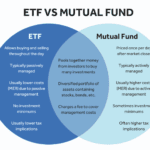Bonds vs. Stocks: Understanding the Differences and How to Balance Your Portfolio
Two of the most popular asset classes when it comes to investing are stocks and bonds. While both can play a crucial role in a diversified portfolio, they serve different purposes and come with different levels of risk and reward. Understanding how they work and how to balance them in your portfolio is key to building long-term wealth.
What Are Stocks?
Stocks represent ownership in a company. When you buy shares of a company, you become a shareholder, meaning you own a portion of the business. The value of your shares fluctuates based on the company’s performance, investor sentiment, and broader market trends.
Key Characteristics of Stocks:
✅ Higher Potential Returns: Over the long term, stocks tend to outperform bonds. Historically, the stock market has averaged annual returns of around 7-10% after inflation.
✅ Volatility and Risk: Stock prices can fluctuate significantly due to economic conditions, company earnings, or market sentiment.
✅ Dividends: Some companies pay dividends—regular cash payments to shareholders—providing an additional source of income.
✅ Growth Potential: Stocks can generate significant returns if you invest in strong, growing companies.
Types of Stocks:
-
Common Stocks: Provide voting rights and dividends (if offered).
-
Preferred Stocks: Offer fixed dividends but usually no voting rights.
-
Growth Stocks: Focus on capital appreciation, often reinvesting earnings instead of paying dividends.
-
Value Stocks: Undervalued companies with potential for future growth.
-
Dividend Stocks: Provide regular income through dividends.
What Are Bonds?
Bonds are debt instruments issued by governments, corporations, or municipalities to raise capital. When you buy a bond, you are lending money to the issuer in exchange for periodic interest payments and the return of the principal amount at maturity.
Key Characteristics of Bonds:
✅ Lower Risk: Bonds are generally less volatile than stocks, making them a safer investment.
✅ Fixed Income: Bonds provide predictable interest payments (known as coupon payments).
✅ Capital Preservation: Bonds help protect wealth, especially during market downturns.
✅ Inflation Risk: While bonds offer stability, their returns may not always keep up with inflation.
Types of Bonds:
-
Government Bonds: Issued by national governments (e.g., U.S. Treasury bonds).
-
Corporate Bonds: Issued by companies to raise capital.
-
Municipal Bonds: Issued by local governments, often tax-exempt.
-
High-Yield Bonds (Junk Bonds): Offer higher returns but come with higher risk.
Key Differences Between Stocks and Bonds
| Feature | Stocks | Bonds |
|---|---|---|
| Ownership | Represents ownership in a company | Represents a loan to a company/government |
| Returns | Higher potential returns over time | Lower but more stable returns |
| Risk Level | Higher risk due to market fluctuations | Lower risk, but still subject to credit and interest rate risks |
| Income | Can pay dividends, but not guaranteed | Fixed interest (coupon payments) |
| Volatility | High | Low to moderate |
| Best for | Growth and long-term wealth | Stability and income generation |
How to Balance Stocks and Bonds in Your Portfolio
A well-balanced portfolio includes both stocks and bonds to reduce risk and optimize returns. The right balance depends on your risk tolerance, investment goals, and time horizon.
General Portfolio Allocation Strategies:
-
Conservative (Low Risk, More Bonds)
-
70% Bonds / 30% Stocks
-
Best for: Retirees or risk-averse investors
-
Focuses on capital preservation and steady income.
-
-
Moderate (Balanced Approach)
-
50% Bonds / 50% Stocks
-
Best for: Investors seeking moderate growth with reduced risk
-
Provides stability while still capturing some growth.
-
-
Aggressive (High Risk, More Stocks)
-
80% Stocks / 20% Bonds
-
Best for: Young investors or those with a long time horizon
-
Maximizes growth potential while still having some bond protection.
-
-
100% Stocks (Very Aggressive)
-
Best for: High-risk tolerance investors focused on long-term growth
-
Suitable for those who can handle market downturns without panic selling.
-
The Rule of Thumb: The 100 Minus Age Rule
A common strategy suggests subtracting your age from 100 to determine your stock allocation.
📌 Example: If you’re 30 years old, you should have 70% in stocks and 30% in bonds.
When to Adjust Your Portfolio
🔹 Market Conditions: During market downturns, shifting slightly more towards bonds can provide stability.
🔹 Life Changes: As you near retirement, gradually increasing your bond allocation can protect your wealth.
🔹 Interest Rates: Rising interest rates can negatively impact bond prices, so adjust accordingly.
Final Thoughts: Finding the Right Balance
Both stocks and bonds are essential for a well-diversified investment portfolio. While stocks offer higher returns, they come with greater risk. Bonds provide stability and income, but may not generate high returns. By understanding how each works and adjusting your allocation over time, you can create a portfolio that aligns with your financial goals and risk tolerance.
📌 Key Takeaways:
✔ Stocks = Higher risk, higher reward
✔ Bonds = Lower risk, stable returns
✔ Diversification is key to long-term success




